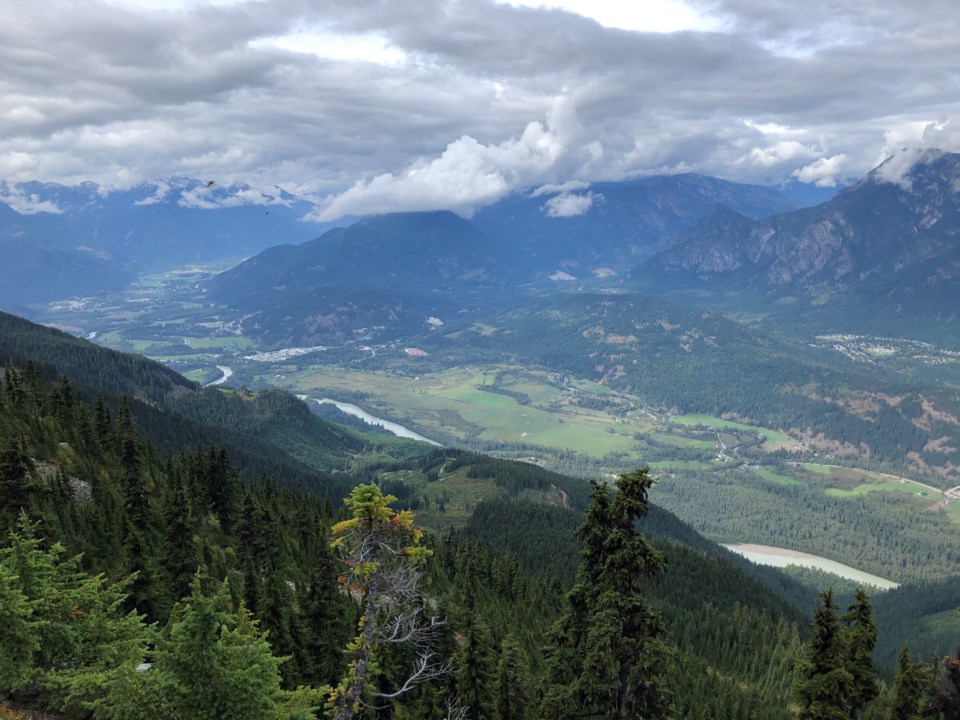Lil’wat Lands and Resources is set to undertake a top-to-bottom update on its land-use plan—and it's looking for help from Nation members.
Since its passage in 2006, the Lil'wat Land Use Plan (LLUP) has provided a high-level vision for the Nation's traditional territory that respects and recognizes Lil'wat principles. The policy addresses water security, fishing grounds, wildlife protection (for food and culture), diversity of vegetation and heritage preservation.
“We are working on creating a holistic approach to healing our territory while also moving our nation forward in the modern world,” said Lil’wat Lands and Resources director Casey Dick-Wyatt and LLUP project coordinator Hayden Triggs in a joint statement to Pique.
“A lot has changed since Phase 1 of the LLUP was adopted and the time has come to update the existing LLUP to address the changing environment, [be it] socially, politically or ecologically.”
Scope of the update
The forestry section of the LLUP was updated in 2024 with funding from the province to address old-growth forest management. The addendum was spurred by a shift in management over Lil'wat Forests; Lil'wat Forestry now oversees a majority (76 per cent) of forested space in the traditional territory, as opposed to, previously, "large, external corporations that provided little benefits to the Lil'wat community."
Now, Lil’wat Lands and Resources is looking for a more comprehensive update.
“We will be going through the entire LLUP," said Dick-Wyatt and Triggs. "Some sections may need more updating than others, but we plan on creating more detailed watershed mapping and integrating that into our referral process to increase efficiency in our processes.
“We are also going to incorporate more of our traditional stories into the update, as the land is our culture.”
A key part of the update involves addressing a changing climate and the results of centuries of colonial land management forcibly imposed on the Nation.
“Climate change and colonial land management strategies have created an urgent situation of worsening natural disasters and unpredictable weather,” said Dick-Wyatt and Triggs. “It has also fragmented our natural territory into a patchwork of natural places and overdeveloped and degraded environments.”
Jurisdiction and the LLUP
“The plan provides management direction to sustain the plants, animals, and waters of this land, and the health of the Lil’wat people, who rely on the resources that our Traditional Territory offers,” reads the original text.
It recognizes the Lil’wat right to their tribal territory, offers an ideal vision for the future of that territory and lays out key guardrails of collaboration between the Lil’wat and others who use and seek to use the land.
The extent of the original plan’s jurisdiction is unclear, because “the traditional territory of the Lil’wat Nation extends beyond the boundaries” of the plan.
In 2006, at the time of the LLUP's original passage, the plan’s analysis, policies and land-use designations applied with the boundaries of a 797,131-hectare space laid out by a 2003 map. The new plan will reflect potential shifts in boundaries as the true extent of the Lil'wat's territory continues to be studied.
“We are continuing to work with neighbouring Nations as we all develop formal land use plans," noted Dick-Wyatt and Triggs. "So yes, some boundaries may change or become more defined.”
To that end, the director is hopeful about the Nation’s legal footing in establishing jurisdiction over those grounds, citing the establishment of a handful of recent legal precedents. Those cases include:
- Yahey v. British Columbia and the Supreme Court of Canada (2021), which found industrial development infringed upon the Blueberry River First Nation's Treaty 8 rights;
- Ehattesaht First Nation v. British Columbia (2023), which challenged B.C.'s system of granting mineral tenures without prior consultation with First Nations;
- Tsilhqot'in Nation v. British Columbia (2014), which established that the province cannot unilaterally claim a right to engage in clearcut logging on lands protected by Aboriginal title without meaningful consultation;
- The passage of the United Nations Declaration on the Rights of the Indigenous Person and the B.C. Declaration on the Rights of Indigenous Peoples Act.
Actions under Phase 1
The Nation pointed out that just because the LLUP plan is in need of an update, doesn’t mean Phase 1 of the plan wasn’t a success. As a result of the plan, approximately 60 per cent of the territory’s forested land base is protected from harvesting and cultural and archaeological sites are being protected.
The Land Use Plan also spun off into the 2019 Visitor Use Management Action Plan and 2021 Visitor Use Management Strategy (VUMS), which manage visitors to provincial parks and rec sites within the traditional territory.
“Líl̓wat Nation territory faces increasing pressures from recreational uses throughout the territory and the update will help guide our decision-making for what Líl̓wat feels is a manageable and reasonable amount of activity to occur and in what areas of our territory,” said Dick-Wyatt and Triggs.
Their statement cited the closures of Joffre Lakes in 2023 as being made possible by the VUMS, and, by extension, the LLUP.
The Lil’wat Lands and Resources Department has put out a call for citizens to commit to being on the project steering committee. Interested members of the Nation are asked to submit a letter or email of interest to [email protected] by Jan. 20. More information on the criteria for committee members can be found on the Nation’s Facebook page.




